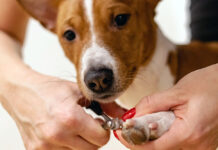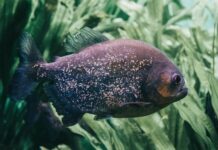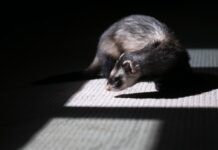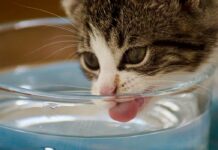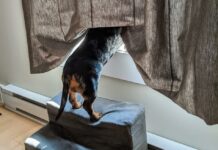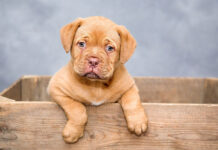Dog flea control and management requires an integrated approach. For effective treatment both the host animal and the environment must be treated at the same time. Control of fleas on the pet generally requires the use of insecticides. Although flea combs can remove some fleas, combing should be thought of as a method for detecting fleas rather than removing them.
If an animal is to be treated for other conditions besides fleas, such as expression of anal glands, these procedures should be done before the insecticide application to minimize insecticide contact with interior mucosal membranes.
A wide range of insecticides are available for flea control. The pyrethrins and pyrethroids have the lowest mammalian toxicity. These insecticides come in many formulations including shampoo, dust and powder, mousse, aerosol and non-aerosol mist or spray, dip, spot-on, roll-on and collar. Organophosphate drugs for oral use are available, by prescription from veterinarians.
In addition, some on-animal formulations contain insect growth regulators (IGRs) that kill flea eggs on the animal. *Remember to read all insecticide labels, and to follow all precautions and dose directions.
The insecticides used for flea control vary widely in toxicity and efficacy. Considerations for selecting a formulation include the size, weight and age of the animal, as well as the species.
For example, greyhounds are a very chemical-sensitive breed and are more sensitive to insecticide products than most other dogs. Do not attach flea collars or flea-killing medallions on these dogs. Do not use chlorpyrifos, DDVP, methoxychior or malathion on greyhounds.
Cats are more sensitive to organophosphate insecticides than dogs. In addition, cats groom themselves more than dogs and are more likely to ingest an insecticide by licking the residue from their fur.
Kittens and puppies, because of their smaller size, require a lower dose than adult animals. Young animals may also require treatment with insecticides of lower toxicity than adult animals. Pregnant or nursing animals may be sensitive to certain insecticides.
Several products are available for especially sensitive pets and other situations that require lower risk chemical measures. These include the citrus peel extracts d-limonene and linalool, sorptive dusts such as silica aerogel or diatomaceous earth, the insect growth regulators fenoxycarb or methoprene, and insecticidal soaps.
Theses words may seem foreign to you, but you can always consult a veterinarian if you have questions. They will have accurate information on insecticides and their use for flea control on pet animals. The insecticide label should also contain accurate information on how a particular formulation of an insecticide should and should not be used. *Remember to read these labels before opening the container!
When using insecticides for flea control, remember that the applicator, namely your pet and you can be exposed to the insecticides several times. The label may call for the use of gloves and other protective equipment during application and suggest the pet not be handled with unprotected hands until the treatment dries. All personal protective equipment listed on the label must be worn. As a minimum aspect, chemical-resistant gloves, apron and goggles should be worn while mixing insecticides and during application to prevent insecticide contact with the skin.
The working area should be appropriate for containment of the pesticide and should be resistant to caustic materials. A stainless steel preparation table and stainless steel or ceramic tub are ideal. Also, certain parts of the pet’s body (such as the eyes) may be sensitive to the insecticides and must be shielded during application. When using flea “bombs” (aerosol cans with a self-releasing mechanism), follow all the precautions and remove the pets from the area being treated. For your information, using excessive aerosols is illegal and may cause fires and even explosions.
The other important part of an integrated flea management program is to control larval fleas in the habitat away from the animal. This can be achieved either mechanically or with insecticides. Mechanical or physical control of flea larvae involves removal and laundering of animal bedding and thorough cleaning of areas frequented by the animal.
Using a vacuum with a beater bar and immediately disposing of the waste bag effectively eliminates up to half of the larvae and eggs in carpet. You should also launder animal bedding and thoroughly clean areas the animal frequents and dispose of the vacuum waste bag after every cleaning.
Do not put insecticides in the vacuum cleaner bag. This is an illegal and dangerous use of the products and can harm you, your family and pets by creating dusts or fumes that could be inhaled.
Another mechanical control measure is carpet shampooing or steam cleaning. This rids the carpet of blood feces, an important food for the larvae, and may also remove eggs and larvae. In outdoor areas, cleaning up the places where animals like to rest reduces eggs and larvae and removes blood pellets. In yards and kennels, flea larvae can be found in cracks at wall-floor junctions and in floor crevices. These areas must be thoroughly cleaned and then maintained to prevent another infestation.
Recently several ultrasound devices, including collars, have entered the market claiming to control or repel fleas. Several scientific studies have investigated these devices and found absolutely no basis for the manufacture’s claims. Ultrasonic devices do not control flea populations. It is unnecessary for you to buy these equipments.
Chemical control of flea larvae can be achieved with insecticides. Organophosphate, carbamate, pyrethrin, pyrethroid and growth regulator (hormone mimic) insecticides as well as certain minerals are available for flea control in the environment These insecticides are formulated as coarse sprays, foggers and dusts or are micro-encapsulated.
All but the growth regulators kill flea larvae on contact. Insect growth regulators prevent flea larvae from developing to the adult stage. Growth regulators may also inhibit egg hatching. A good flea larval control program will incorporate sanitation, contact insecticides and growth regulators for good results.
Flea management requires patience, time and careful planning. Vacuuming and cleaning areas frequented by dogs and cats should be routine. The same applies to kennels. If an infestation occurs, insecticide applications on the animals or in the environment may have to be repeated according to the label. The need for retreatment and time intervals between insecticide treatments will vary with the kind of insecticide and the formulation.
Flea control will not be successful if only one approach is used. The animal and its environment must be treated simultaneously, and that treatment must be combined with regular sanitation efforts. Read all product labels carefully. Do not overexpose your pet by combining too many treatments at one time, such as a collar, a shampoo and a dust. Pesticides have a cumulative effect. Be aware of each product’s toxicity and do not endanger yourself or the animal by using excessive amounts of any one product or by combining products.
To end, please remember that flea control will only be successful when you treat both your pet and the environment simultaneously. Hope this article is useful in helping you manage flea problems.

